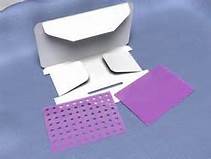Septal perforations are an infrequent and unfortunate sequelae of septorhinoplasty surgery. Subperichondrial exposure of the septum for straightening and/or graft harvest risks disruption of the mucosal lining which may not fully heal if there is lack of cartilage underneath it. This is the root cause of any septal perforations which have a wide range of sizes from small (less than 0.5 cm) to quite large. (2.0 cms or larger) Symptoms from septal perforations include a whistling deformity, crusting, bleeding and having an odor.
While smaller septal perforations have a relatively high success rate of repair, as the size of the septal perforation becomes larger successful repair decreases precipitously. Many different methods of septal perforation have been proposed but they fundamentally consist of mucoperichondrial flaps with some intervening graft material. The most difficult aspect of this procedure is stabilizing the graft in place underneath the mucoperichondrial flaps.

The use of a PDO plate to aid in septal perforation repair is a sturdy and inexpensive scaffold to stabilize a temporalis fascial graft. The very thin plate is completely resorbable. It can be a valuable technical material addition to the treatment of medium to large septal perforations.
Dr. Barry Eppley
Indianapolis, Indiana


